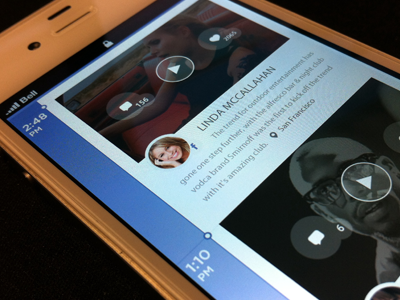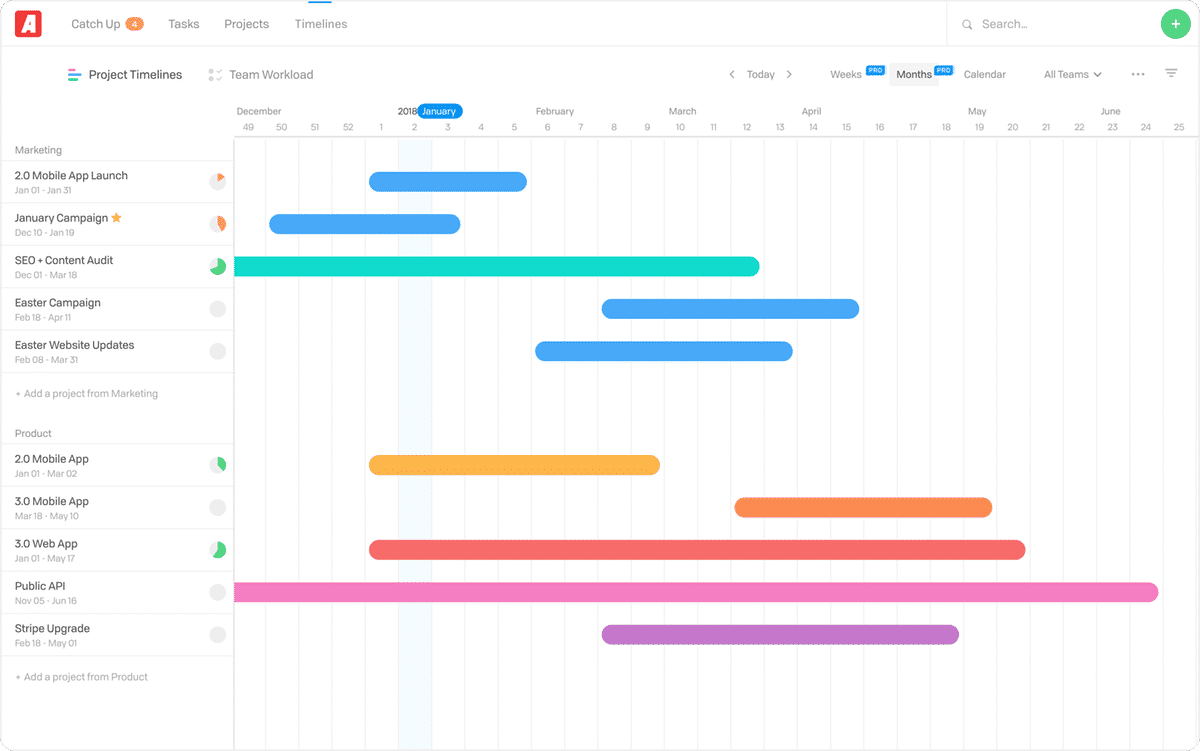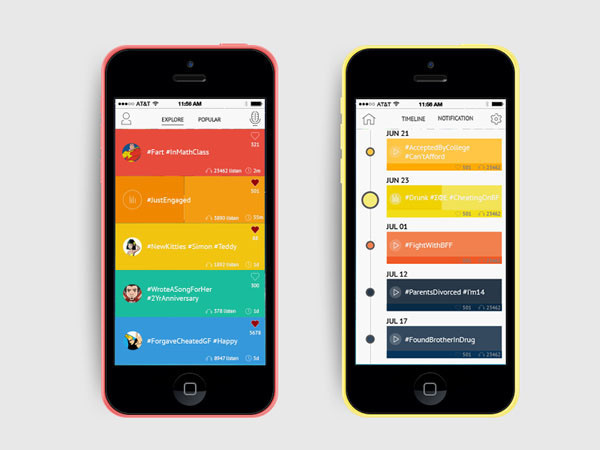Best App For A Timeline
- Best calendar app for working with other Newton products Newton Calendar is a free iOS calendar app created by CloudMagic. The app integrates with Newton Mail, a mobile email app. Existing Newton Mail users can enjoy automatic synching with calendar events as soon as they install the app.
- Team members can share project files using the download and upload feature of the dotProject app. Download: dotProject for Windows (free) 2. One of the most widely used free Gantt chart makers is GanttProject. Unlike many other free online Gantt chart tools, this one is standalone software.
- The best way to gain control over this overwhelming amount of information is to lock it into a timeline, using TrialLine, the best litigation timeline software available to, and made especially for, lawyers and attorneys. When you place your information and facts into a timeline, the connections which develop can be highly significant to your case.
- A shake-up is going to the world of the best weather apps. Dark Sky, formally our top pick when you need a weather app, is living on borrowed time. And that means people who've relied on Dark Sky.
This step-by-step Word timeline tutorial explains how to create professional timelines right inside the popular word processor.
Microsoft Word allows users to build a basic timeline that they can manually customize to adjust to their project’s requirements. However, since the tool is designed mainly for editing copy, it may lack the flexibility that one needs to create more impressive visuals and update them easily.

Those who need to constantly create and update project visuals for presentations to clients or executives may find it easier to build their timelines using PowerPoint. In the following, I will show you how to make a timeline both manually in Word and automatically in PowerPoint.
Which tutorial would you like to see?
How to make a timeline in Word

1. Create a basic timeline
The app searches just about every mode of transportation—plane, train, subway, bus, ferry, taxi, Uber—to recommend the best way to get from point A to point B.
Open a new Word document and change the page orientation from Portrait to Landscape, which will make room for more items to be placed on the timeline. To do so, go to the Layout tab on the Word ribbon and click on Orientation.
Select the Insert tab and click on the SmartArt button in the Illustrations section.
Select the Process category within the window that pops up and pick the graphic type that you want to use for your Word timeline. You have a variety of options to choose from, but for a simple timeline that shows the main milestones of a project, I’d recommend going with the Basic Timeline, which you can see bordered below.
If you want to try out different layouts for your timeline, you can always change the style and colors from the SmartArt Tools Design tab on the ribbon.

2.Enter your data
Once Word has generated your basic timeline, open the Text Pane by clicking on whichever of the two areas bordered in the image below. You’ll find that it makes it much easier to update the default graphic than entering your data directly in the input fields on the timeline.
Enter your milestone dates and descriptions inside the Text Pane - the graphic will be automatically updated. To show a milestone’s date below or above its description, you can insert a line break using Shift + Enter.
Note: Since Word is not able to automatically calculate time intervals between milestone dates, your milestones will be placed at equal distances on the timeline regardless of the number of days between them. You have the option of manually dragging them closer or farther from one another, but the graphic will get distorted as you add more items. This is why I recommend leaving them as they are.
To insert extra events or deliverables on your timeline, simply press Enter after an existing milestone label inside the Text Pane. The more events you add, the more the text size will shrink. This is why a maximum of 7 milestones is recommended to make sure that your data remains legible.
Note: Manually increasing the text size for improved readability may ruin the entire layout of your timeline. A better alternative would be for you to expand the graphic box, which will automatically make the texts larger too.
3. Customize your timeline
Now that your basic timeline is outlined, you can customize its overall look by changing its primary color theme from the Change Colors dropdown menu or by selecting a different style from the SmartArt Styles section. In my example, I applied the Intense Effect style, which made the milestone shapes more prominent.
To customize individual items on the timeline, use the formatting options available in the small window that appears once you right-click on the specific element you want to personalize. For example, you can change the color of a milestone or of the arrow-shaped band using Shape Fill, and that of the text using Font Color.
Next, you can use Drag & Drop to decrease the width of the arrow shape and move the circles a little higher or lower on the timeline to position them closer to their corresponding descriptions. This should make it easier for your audience to follow the succession of milestones.
Finally, to make certain milestones stand out even more, you can also resize them or change their shape using the options in the SmartArt Tools Format tab.
After experimenting with several shape and size options, my MS Word timeline looks like this:
How to make a timeline in PowerPoint automatically
Apart from being time-consuming, manually creating a timeline in Word may also get frustrating if you want to apply custom changes or need to update the visuals regularly for important presentations.
PowerPoint is better suited than MS Word for building visuals to present in client meetings or executive reviews. Below, I will demonstrate how to automatically create and update your graphic using a simple add-in for PowerPoint called Office Timeline. To get started, you first need to install Office Timeline Basic, which will add a timeline maker tab to the PowerPoint ribbon.
1. Open PowerPoint and enter your data into the Office Timeline Wizard

Go to the Office Timeline Basic tab you’ll see on the PowerPoint ribbon and click on New.
You will be taken to a gallery where you can choose from a variety of styles and templates that you can use for your timeline.
Double-click on the template or style you prefer and then select Use Template in the preview window to open the Data Entry Wizard. For my example, I chose a custom template made earlier, which you can download here.
In the Data Entry window, you can either manually enter your milestones and set their dates, or you can copy and paste them from an existing Excel file. This is also a good place to start making a few quick customizations, such as changing the color or shape of each item you’ve added. Once you finish, click the Create button.
2. A new timeline slide will be instantly generated in PowerPoint
Depending on your template choice and the customizations you make, your timeline can look similar to this:
Once you’ve built your timeline, you can easily restyle or update it automatically using Office Timeline. For instance, you can change the color, position and date format of any milestone or add new ones on the fly as your plans change, or you can insert tasks as well to create a Gantt chart.
(Learn to make a Gantt chart manually in Word or automatically in PowerPoint )

Watch how to build a PowerPoint timeline in less than a minute:
In our digital age, the amount of information amassed for a trial can truly be staggering. As a matter of fact, it is not uncommon for an attorney to encounter thousands—or hundreds of thousands—of documents which must be processed and reviewed, then narrowed down to the documents most relevant to the case. The best way to gain control over this overwhelming amount of information is to lock it into a timeline, using TrialLine, the best litigation timeline software available to, and made especially for, lawyers and attorneys.
When you place your information and facts into a timeline, the connections which develop can be highly significant to your case. In other words, when information or facts are isolated, they are of little use, but when they are linked to other evidence, you get a much better sense of the bigger picture, and that makes communicating your client’s case to a jury or judge, that much easier. TrialLine’s case timeline software turns information into a rich chronology.
Best App For A Timeline Of Business
Moving from Notepads and Word Documents to Litigation Timeline Software
While most attorneys have relied on detailed written notes on yellow legal pads, as well as computer-generated word processing documents for much of their career, these same attorneys now have the option of adding specialized trial timeline software to their arsenal in order to maintain the connections between events and information, and the extremely important chronology. If you’ve never used timeline software before, you’ll likely be pleasantly surprised at the benefits it offers, and how easy the right software is to use.
Choosing the Right Litigation Timeline Software
Choosing the best timeline software available to lawyers can seem as overwhelming as organizing your trial information by hand. To choose the best software for your law firm, you have to ask yourself what your goals are, what your budget can stand, and how competitive you want to be with other trial lawyers. Some of the timeline tools available use Adobe Flash as the backbone of the software. While Flash is a robust, interactive way to create a timeline, it does have its drawbacks—namely that it cannot be used with an iPad and is difficult to integrate into Power Point. With Power Point, you can create a slide show that functions as a basic timeline, however you will not have the abilities and interactivity of Flash. In the end, the software your firm chooses must be carefully tailored to the specific needs of your firm.
Best App For Making A Timeline
Consider TrialLine by Law Father
Best App For A Timeline For A
TrialLine gives you the interactivity of Flash, and the usability of Power Point. It’s a cloud-based mediation and trial presentation timeline tool for law firms that want to create efficient and easy to use legal chronology for their cases. With TrialLine, you can easily organize and share your case events and related documents with staff, experts, juries, opposing counsel, and other attorneys. It is completely web-based and can be accessed and shared through any internet connection on any device. Sign up now to try it FREE FOR 30 DAYS!